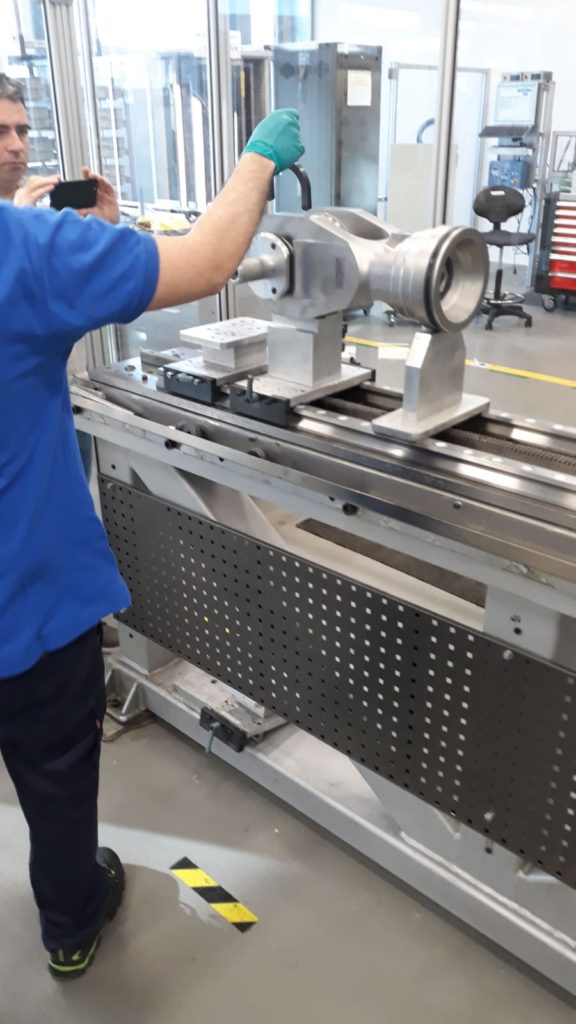The A4BLUE solutions are being tested and validated in four use case scenarios. They consist of two real industrial scenarios, at Airbus in France and CESA in Spain, and two laboratory-based scenarios, at IK4-TEKNIKER in Spain and RWTH Aachen University in Germany.
Within the CESA use case scenario, A4BLUE introduces the first collaborative automation in their assembly facilities which will reduce the high dependency on manual work within CESA and allow workers to use their time in a better and less exhausting way. In addition, an Augmented Reality (AR) device is being implemented to provide the workers with comprehensive and simple information to guide them in executing their work. This will allow operators to share best practice techniques between one another which reduces training needs, since the operators will be guided through the assembly process by information adapted to their individual level of expertise.
All the partners involved in the CESA use case are working hard to implement all the activities planned and achieve the objectives described above.
Cranfield University and Illogic visited CESA facilities on January to witness the complete assembly processes of the Retraction Actuator done by two different operators with different levels of expertise. For Illogic was a very useful visit to understand better the assembly process in order to implement the augmented reality according to CESA requirements. At the same time, Cranfield University was very interested in the differences between the two operators during assembly and the best practices applied by each of them



